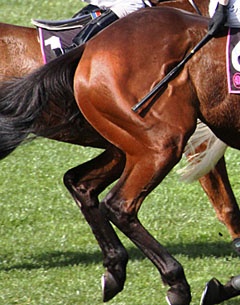
Paul McGreevy and L. Ralston of the University of Sydney researched the whipping of Australian thoroughbred racehorses in the penultimate 200 metres of races and concluded that the whipping is influenced by the jockeys’ experience.
Animal welfare issues associated with whip use during Thoroughbred races in Australia are of increasing importance as the racing industry seeks to promote the wellbeing of its equine athletes. Recent data have called into question the justification of whip use as either an accelerator or for steering.
Our aim was to investigate associations between whip use and pre-race variables including jockey experience (apprentice versus non-apprentice), starting price, weight carried and barrier drawn. If the whip is genuinely used in response to a given horse’s performance, there should be no consistent predictors of whip use.
We explored the influence of these variables on official whip counts for the race section 400 to 200 m from the finish (S2), and the section 200 m to the finish (S1) over five 1,250 m and 1,220 m races involving apprentice (n=7) and non-apprentice jockeys (n=18) (in which 49 horses were eligible for this study) and found that, for S1 alone and when whip use in S1 and S2 was summed (i.e. to summarize the final 400 m of a race), there were no significant predictors on whipping. However, in S2, apprentice jockeys whipped horses on average more than three times more than non-apprentice jockeys (1.48 vs 0.45; P=0.022). Unexpectedly, horses drawn close to the rail were whipped more than those drawn further from the rail.
These findings suggest that barrrier draw and rider inexperience in Thoroughbred racing influence the distribution of whippings imposed on horses as they tire in the penultimate 200 m section and may contribute to the growing debate surrounding whip use in the sport of horseracing. This preliminary report involved only small numbers of horses and jockeys and so should be viewed as a trigger for larger scale investigation of the pre-race predictors of whip use in Thoroughbred racing.
If the whip is genuinely used in response to a given racehorse’s performance, there should be no consistent pre-race predictors of whip use. However, this study shows that, in the small number of random races studied, jockeys’ experience had a strong influence on their use of the whip. This suggests that whipping is a crude intervention.
-- 2011 ISES Conference Abstract
Related Links
Horses and Abnormal Behaviour Investigated in Three Counties in Sweden
The Effect of Tryptophan Products on Stressful Horses